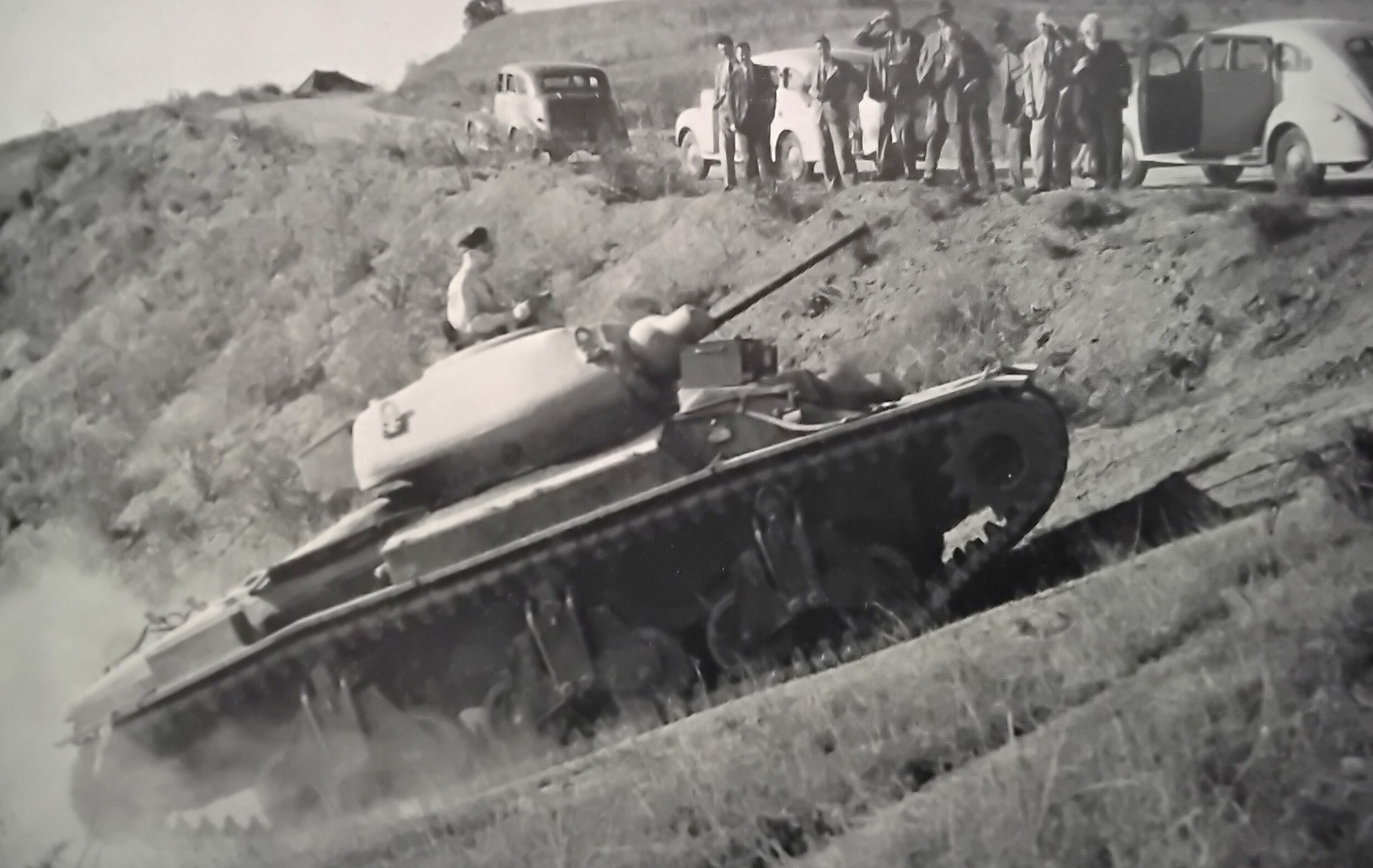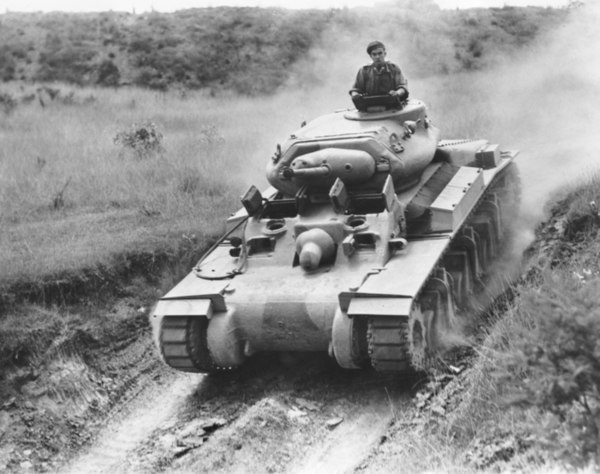Sentinel tank
Free from, Australian History
The Australian Cruiser Tank was a series of tanks developed and manufactured in Australia during World War II. These tanks were part of Australia's effort to contribute to the Allied war machinery and were notable for their design and production challenges,
| Australian Cruiser Tank | ||
 | ||
| Australian Cruiser Tank A.C.1 | ||
| Overview | ||
| Name | Australian Cruiser Tank | |
| Manufacturer | Victorian Railways, South Australian Railways, Metropolitan Gas Company, Ford Motor Company. | |
| Production | 1942-1943 | |
| Assembly | Victorian Railways' Newport Workshops, South Australian Railways' Islington Workshops, Metropolitan Gas Company's Fitzroy Workshops, Ford Motor Company Homebush Plant. | |
| Design and construction | ||
| Designer | Department of Munitions. | |
| Class | Cruiser tank | |
| Body_style | Armoured fighting vehicle | |
| Specifications | ||
| Layout | Tracked | |
| Engine | Cadillac 75M, later Perrier-Cadillac | |
| Transmission | Manual | |
| Dimensions and weight | ||
| Wheelbase | N/A | |
| Length | 21 ft (6.4 m) | |
| Weight | 28 tons | |
| Predecessor and successor | ||
| Predecessor | None | |
| Successor | None | |
History
The Australian tank armour was derived from imported tanks and underwent extensive testing, demonstrating that the armour was not inferior to imported armour. The success was due to advanced foundry techniques and efficient steel-making and heat-treatment processes. Significant scientific investigation and testing were conducted by a team of metallurgists from private and government laboratories, led by Mr. Clark of B.H.P., Chief Metallurgist Adviser to the Directorate of Munitions, with major contributions from Mr. Certutti of Sydney Technical College and Mr. Bennett of New South Wales Government Railways.[2]
Design and Construction of the A.C.1 Tank
The A.C.1 tank featured a streamlined silhouette and a novel turret drive mechanism. The detailed design process involved constructing a full-sized wooden mock-up to finalize many design details. The
Coordination and Production Challenges
The production of the A.C.1 involved numerous contractors, including Bradford Kendall Ltd., Coote and Jorgensen Ltd., and others, with over 312 direct contractors and 259 sub-contractors. Coordination faced significant challenges, such as delays in design finalization and manufacturing components. Despite these obstacles, the first Australian Cruiser Tank left the assembly line in August 1942, with 66 Mark I tanks eventually delivered to the army.[5]Performance and Criticisms
The A.C.1's performance during tests at Fort Gellibrand on June 29, 1942, highlighted its capabilities, successfully firing a 25-pounder gun. However, there were ongoing issues such as the turret drive gear's reliability and engine cooling. Observers from the American Army were impressed by the A.C.3 model, which featured several improvements over the A.C.1.[6]Manufacturing Locations
The production of the Australian tank was delegated to four main concerns:
• Victorian Railways' Newport Workshops
• South Australian Railways' Islington Workshops
• Metropolitan Gas Company's Fitzroy Workshops, Victoria
• Ford Motor Company, Homebush, New South Wales[7]
Further Development and Conclusion
By February 1943, the prototype A.C.3 tank was tested, and final decisions were made regarding its production. Despite positive assessments, the tank program faced ongoing difficulties. The American Lend-Lease program influenced the cessation of Australian tank production, as it was deemed more efficient to use American tanks. The Australian Cruiser Tank program concluded with 66 Mark I tanks built, but the tanks never saw action in the war. The A.C.3 and A.C.4 models, although promising, were never fully produced due to changing strategic priorities and the availability of American tanks.[8]References
- Mellor, D.P. "The Role of Science and Industry." p. 320.
- Mellor, D.P. "The Role of Science and Industry." p. 312-313.
- Mellor, D.P. "The Role of Science and Industry." p. 313-314.
- Mellor, D.P. "The Role of Science and Industry." p. 314-315.
- Mellor, D.P. "The Role of Science and Industry." p. 315-317.
- Mellor, D.P. "The Role of Science and Industry." p. 317-318.
- Mellor, D.P. "The Role of Science and Industry." p. 320.
- Mellor, D.P. "The Role of Science and Industry." p. 318-320.